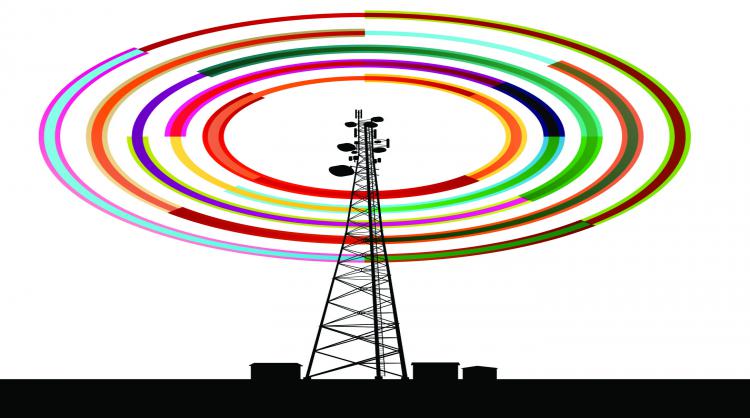FCC Equalizes Pole Attachment Rates for Telecom and Cable Companies
December 4, 2015 | by Andrew Regitsky

Pole attachment rates get little publicity in our industry, but are extremely important. By some estimates, pole attachment rentals comprise one percent of operating costs for some companies. Therefore, when the FCC changes the pole attachment rates, it's big news! On November 24th, in an Order on Reconsideration (“Order”) that was expected for months, the FCC equalized the pole attachment rates for telecommunications and cable companies. Historically, under rules ratified by the U.S. Supreme Court, cable companies have paid lower rates.
The current pole attachment rules for telecom companies were adopted by the FCC on April 7, 2011 in Docket 07-245. Those rules were also designed to equalize the rates but clearly failed.
As noted by Verizon, the 2011 pole attachment rules,
included cost allocators (66 percent for urban areas and 44 percent for non-urban areas) in the new telecom formula “to allow the pole owner to charge a monthly pole rental rate that reflects some contribution to capital costs” but “do[es] not permit utilities to recover 100 percent of apportioned, fully-allocated costs.” The Commission found that “the specific percentages [selected] provide a reduction in the telecom rate, and will, in general, approximate the cable rate… (Verizon Comments, in Docket 07-245, pp. 1-2).
The Commission made its parity estimates with the presumption that there would be five entities attached on urban poles and three entities on rural poles. However, pole owners paired the cost allocators in the telecom formula with significantly lower numbers of average attaching entities than reflected in the Commission cost allocator assumptions. Therefore, the revised telecom rate formula failed to yield rates that approximate the cable rate. Telecom companies paid much more. For example, Verizon stated that the rules resulted in a telecom rate 70 percent higher than the cable rate.
In recognition that the current rules have not worked, the Commission took the following actions:
The rule revisions we adopt amend our rules by defining “cost,” for the purpose of calculating the rates that telecommunications carriers pay for pole attachments, as a percentage of fully allocated costs that will depend on whether the average number of attaching entities in a service area is 2, 3, 4, or 5…[Currently] these allocators applied only in situations where poles have 5 attaching entities (0.66 percent of cost) or 3 attaching entities (0.44 percent of cost)… we now introduce new cost allocators for poles with 2 attaching entities (0.31 percent of costs) and 4 attaching entities (0.56 percent of cost). When the average number of attaching entities is a fraction, the percentage cost allocator will be located between the whole numbers at the point where it most closely approximates the cost used in the cable rate formula. This flexible series of cost allocators should more fully realize the intent of the Commission in its 2011 Pole Attachment Order to bring parity to pole attachment rates at the cable rate formula level (Order at paras. 2-3).
The Commission believes that its decision to equalize cable attachment rates will also mitigate two other problems. First, the Open Internet Order which reclassified broadband Internet access services as telecommunications services adversely impacted pole attachment rates. Cable companies that also provided broadband Internet access service had previously paid the cable rate, but suddenly became subject to the telecom rate.
Thus, reclassification caused a perverse situation that potentially depresses telecom investment. Cable operators that provide telecommunications service, including broadband Internet access service, currently pay higher pole attachment rates than if the cable company chose not to provide any telecommunications service. The Commission believes that its new definition of “cost” adopted here will eliminate this problem and equalize the rates between entities.
Second, the Commission intends its actions to correct the “telecom formula loophole” that exists because some states have proactively taken efforts to equalize pole attachment rates:
As the Commission previously has observed, “[c]ommenters report that many [states that have elected to exercise jurisdiction over pole attachments in lieu of the Commission] apply a uniform rate for all attachments used to provide cable and telecommunications services, and have done so by establishing a rate identical or similar to the Commission’s cable rate formula.” Thus, if the Commission’s telecom rate frequently yielded rates materially above the cable rate, telecommunications service providers that operate in multiple states or are deciding where to enter the marketplace, would have an artificial disincentive to invest in states governed by the Commission’s 2011 telecom rate rule relative to states that established a uniform rate identical or similar to the Commission’s cable rate formula. Although our action in this Order will not guarantee complete state-to-state uniformity, seeking to address artificial marketplace distortions in the manner that we do here, rather than via a higher telecom rate, accords with our broadband mandate and our overall policy balancing in this context (Id. at 22).
The Order should take effect sometime this winter, 30 days after publication in the Federal Register.
By Andy Regitsky, CCMI

